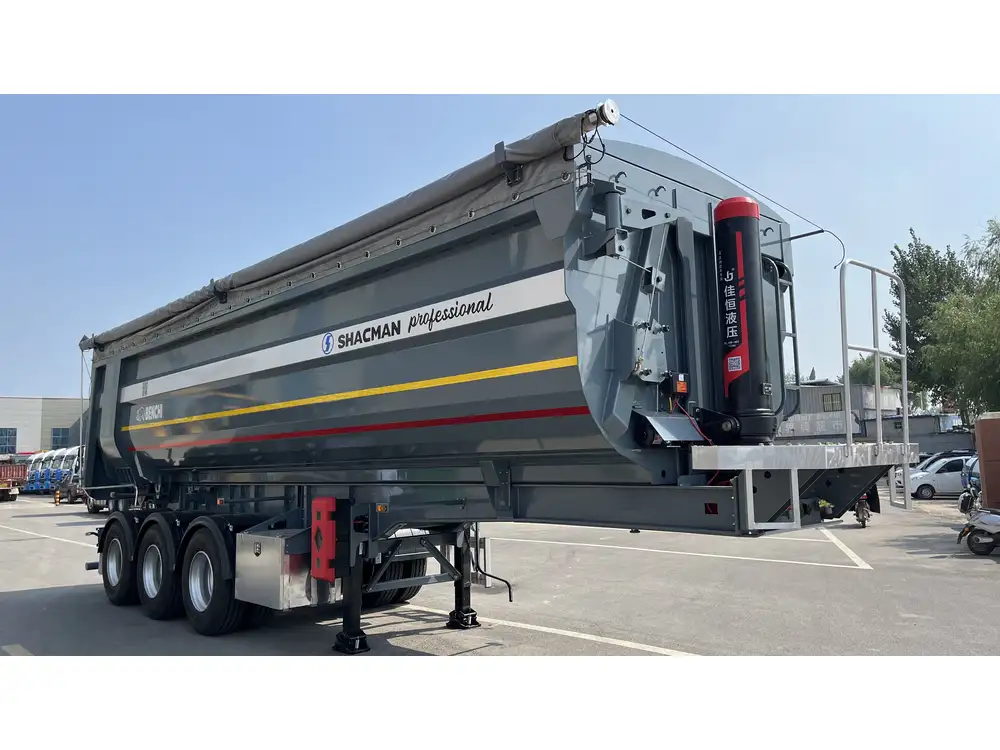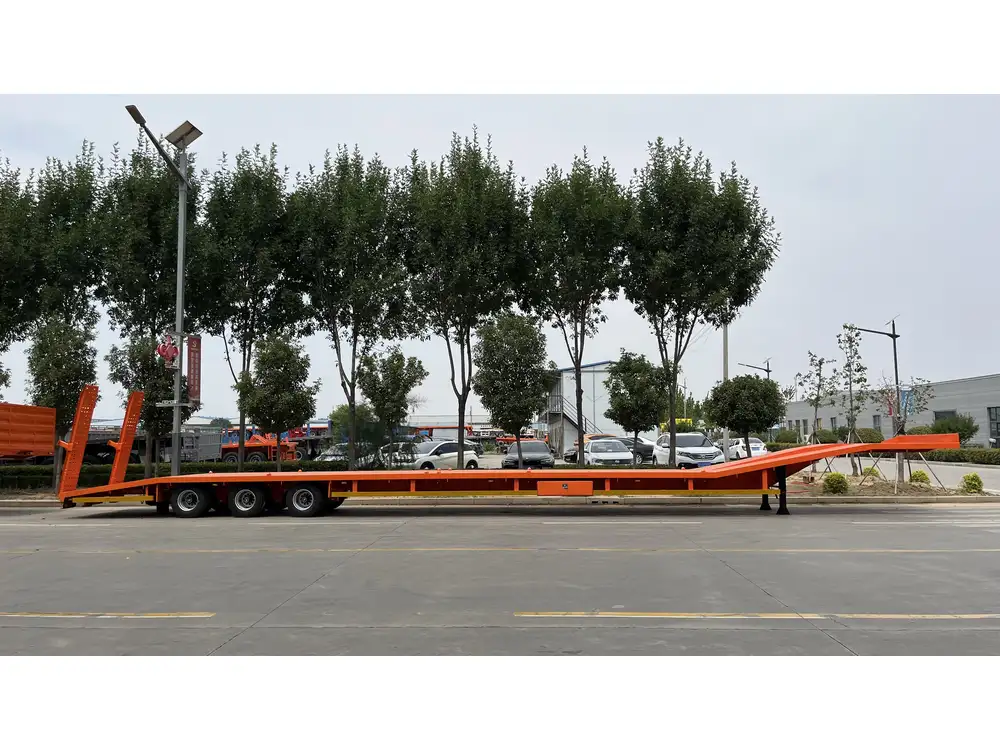Understanding the Structure of the Tire Air Hose System
The tire air hose system in semi-trailers is a crucial component, directly affecting tire inflation and overall vehicle safety. Before diving into the repair process, it’s imperative to understand the system’s layout and function.
Components of the Tire Air Hose System
| Component | Function |
|---|---|
| Air Compressor | Pumps air into the tire air hose, maintaining pressure. |
| Tire Air Hose | Transfers compressed air from the compressor to the tires. |
| Couplers | Connects the air hose to the tires and the compressor. |
| Valves | Regulate air flow and maintain tire pressure. |
Each of these components plays a pivotal role in ensuring that the semi-trailer tires stay inflated during operations. Neglect or malfunction in any part can lead to inefficient tire performance or even catastrophic incidents.

Identifying Common Problems with Tire Air Hoses
Recognizing issues in the tire air hose can prevent costly downtime and dangerous driving conditions. Here are some common problems associated with tire air hoses:
- Leakage: Often manifests as a gradual decrease in tire pressure.
- Kinks and Twists: Physical damage can lead to restrictions in air flow.
- Cracking or Wear: Exposure to elements and heat can degrade the hose material.
- Poor Connections: Loose or corroded couplers can lead to air loss.
Assessing the Damage: Step-by-Step Guide
Before making repairs, a comprehensive assessment of the air hose and associated components is vital. Follow these steps to evaluate the damage accurately:
- Visual Inspection: Examine the air hose for any visible signs of wear, cracks, or leaks.
- Functional Check: Attach the hose to the tire and compressor, then observe if air is escaping during inflation.
- Pressure Testing: Use a pressure gauge to measure the tire’s air pressure. If it drops unexpectedly, there may be a hidden leak.
- Check Couplers and Valves: Ensure that all connections are secure. Corroded or damaged couplers may need replacement.
Tools Required for Repair
Having the right tools at your disposal will make the repair process smoother. Below is a list of essential tools:
| Tool | Purpose |
|---|---|
| Air Pressure Gauge | Measures tire air pressure to determine necessary settings. |
| Wrench Set | For loosening and tightening couplers and fittings. |
| Hose Cutter | To cut and trim damaged sections of the air hose. |
| Repair Kits | Contains patches and sealants for minor leaks. |
| Safety Gloves | Protect hands from abrasives and chemicals during repairs. |

Detailed Repair Process
Now that we’ve assessed the damaged components and gathered our tools, we can delve into the repair process for the tire air hose.
Step 1: Isolate the Air Hose
Begin by disconnecting the air hose from both the tire and the compressor. Ensuring no air is flowing during the repair process is critical for safety.
Step 2: Inspect the Hose for Damage
Carefully scrutinize the hose along its entire length. Check for kinks, cracks, or signs of wear. If the damage is minimal (such as a small crack), a repair kit can often suffice. For significant damage, replacing the hose may be necessary.

Step 3: Repairing Small Cracks
For small cracks or pinholes:
- Clean the Area: Ensure the surface around the crack is free from debris or oil.
- Apply Sealant: Use the adhesive from the repair kit. Apply it generously over the crack.
- Secure with a Patch: Press a patch firmly over the sealant, and hold it until set.
Step 4: Cutting and Replacing Damaged Sections
If the hose is too damaged, cutting is the best solution:
- Measure Accurate Length: Identify the damaged section and measure a new length, ensuring it’s long enough to reach both ends.
- Cut the Hose: Use a hose cutter for a clean, straight cut.
- Attach New Hose: Connect the new piece to the existing hose using couplers. Ensure fittings are secure and tight.
Step 5: Reconnect the Air Hose
With repairs complete:
- Reconnect to Compressor: Securely attach the air hose back to the compressor and tire. Make sure all fittings are tightened adequately.
- Check for Leaks: Before fully inflating the tire, perform a quick check for air leaks by spraying the connections with soapy water. Bubbles will form if there’s a leak.

Step 6: Inflate the Tire
Using the air compressor, inflate the tire to the recommended pressure specified on the tire’s sidewall.
Step 7: Final Inspection
Once inflated, perform a final check. Listen for air leaks and feel for any irregularities at the connections. If everything seems fine, the repair is complete.
Preventative Measures to Extend the Life of Your Tire Air Hose
After repairing the tire air hose, consider implementing the following preventative measures to avoid future issues:
- Regularly Inspect Hoses: Routine checks help catch potential problems early.
- Keep Hoses Clean: Dirt and moisture can degrade materials, leading to quicker wear and tear.
- Avoid Sharp Objects: Ensure hoses are stored and handled away from sharp items that can cause punctures or cuts.
- Proper Storage: When not in use, store hoses in a cool, dry place, coiled neatly without kinks.

Frequently Asked Questions
How Often Should I Check Tire Air Hoses?
Regular inspections are recommended at least once a month or before long trips to ensure optimal performance.
What Is the Average Lifespan of a Tire Air Hose?
With proper maintenance, tire air hoses typically last between 3 to 5 years depending on usage and environmental conditions.

Can I Use Any Type of Hose for Tire Air?
No, it’s important to use air hoses specifically designed for tire inflation to handle the necessary pressures.
What Should I Do If I Can’t Fix My Tire Air Hose?
If the damage appears excessive or complicated, consult a professional mechanic or your trailer manufacturer for guidance.
Conclusion
Understanding how to efficiently fix the tire air hose in semi-trailers is vital to maintaining road safety and operational efficiency. By methodically assessing the damage, performing targeted repairs, and instituting preventative measures, you can extend the life of your tire air system and enhance the reliability of your semi-trailer. Invest time in education about your semi-trailer’s components, and don’t hesitate to seek professional help when needed. This proactive approach will yield dividends in safety and performance on the road.



